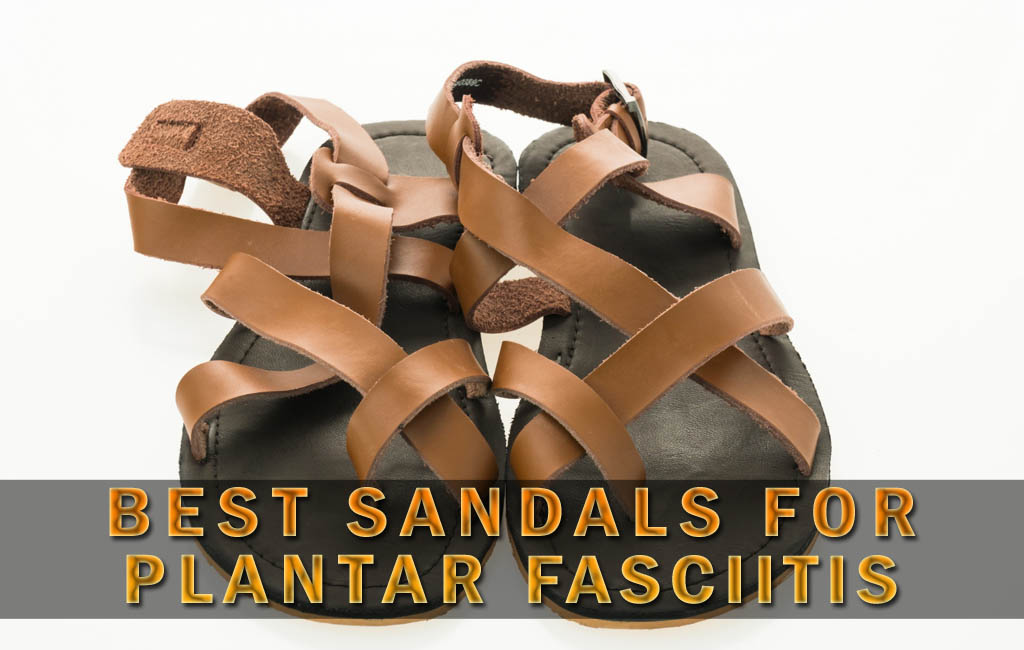For anyone managing heel pain, finding the right sandals for plantar fasciitis isn’t a luxury—it’s a strategy.
into healthier movement patterns. This comprehensive guide explains exactly what to look for, how to dial in your fit, how to build a
pain-smart rotation, and how to care for your sandals so they keep working as hard as you do. The goal is simple: fewer flare-ups,
longer comfortable walks, and more confidence in every step.
Understanding Plantar Fasciitis (In Plain Language)
Plantar fasciitis centers on a tough band of tissue—the plantar fascia—that runs from the heel bone to the base of the toes.
When this tissue becomes irritated from repetitive stress, poor alignment, unsupportive footwear, sudden training spikes, or
prolonged hard-surface standing, it can protest with stabbing heel pain, especially with the first steps in the morning or
after periods of sitting. Properly designed sandals help by reducing strain at the heel, supporting the arch, and dispersing
impact forces so the fascia isn’t overloaded.
How Supportive Sandals Help
- Arch scaffolding: A shaped footbed “lifts” and stabilizes the arch to reduce tissue tugging.
- Heel cupping: A shallow, contoured cup centers the calcaneus (heel bone) and cushions impact.
- Midsole geometry: Firm-yet-flexible platforms guide the foot through a smooth, efficient stride.
- Shock absorption: Proper foams and rubbers dampen ground reaction forces before they reach the fascia.
Key Features to Look For in Best Sandals for Plantar Fasciitis
1. Real Arch Support—Not Just Cushion
Plush foam feels great at first, but without structured arch support, the plantar fascia keeps stretching under load.
Look for a contoured footbed with a visible rise under the arch that matches your foot’s shape without creating pressure points.
2. Deep Heel Cup
A supportive heel cup helps “center” the heel and distributes pressure more evenly. This reduces micro-movements that can
aggravate the fascia with every step.
3. Firm-Flexible Midsole
The ideal midsole resists collapsing but still flexes naturally at the forefoot. If it bends like a paper plate, it’s too soft;
if it’s totally rigid, your gait may feel awkward. You want guided flexibility—think support first, comfort second, fashion third.
4. Rocker or Subtle Toe Spring
A gentle upward curve at the toe can reduce forefoot pressure and smooth the transition from heel strike to toe-off,
which may lessen strain on the plantar fascia.
5. Adjustable Straps
Swelling fluctuates through the day. Multiple adjustment points (forefoot, instep, and heel) let you fine-tune fit and stability—essential for long wear.
6. Secure Heel Strap for Walking
Backless slides can be convenient, but a heel strap improves alignment and prevents “toe gripping,” a compensation that can
tighten the plantar fascia. For errands and long walks, a strap helps more than most people think.
7. Traction and Outsole Design
Look for grippy rubber outsoles with tread patterns that handle wet tiles, polished concrete, and light trails.
Less slipping equals fewer protective compensations elsewhere in your gait.
8. Materials That Balance Comfort and Longevity
- EVA/Compression foams: Lightweight and cushioned; look for higher-density blends for lasting support.
- Polyurethane (PU): Denser, more durable, often holds contour better over time.
- Natural cork: Molds to your foot gradually while maintaining structure.
- Leather linings: Comfortable against skin, manage moisture well when cared for properly.
Types of Best Sandals for Plantar Fasciitis
Orthopedic-Style Sandals
Purpose-built for alignment and pain relief, these typically include pronounced arch support, heel cups, and adjustable straps.
They’re the workhorses of a pain-management rotation.
Everyday Casual Sandals
Designed for daily wear with a balance of aesthetics and support. Look for hidden stability features—support doesn’t have to look clinical.
Sport/Active Sandals
Ideal for walking vacations, sightseeing, and light trails. Expect rugged outsoles, water-friendly uppers, and reinforced midsoles that resist collapse.
Dressy Sandals with Support
For special occasions or the office, a stable block heel (low), supportive footbed, and secure straps keep form and function in harmony.
Avoid flimsy, ultra-flat styles.
How to Choose the Right Pair (A Practical Fit Guide)
Measure, Then Match
- Length: Aim for ~5–10 mm of space beyond the longest toe.
- Width: The foot should sit fully on the platform—no spillover.
- Arch alignment: The highest part of the footbed contour should meet your arch, not ahead or behind it.
Strap Tuning
Start with the forefoot strap, then instep, then heel. Snug, not tight. You should feel secure without hot spots.
Re-adjust if swelling changes throughout the day.
At-Home 5-Minute Test
- Walk on hard floors for 2 minutes to assess impact comfort.
- Climb a flight of stairs (or step-up routine) to test stability.
- Perform 10 slow heel-to-toe rolls on each foot; note any pinching or arch pressure.
- Stand still for 60 seconds—no wobbling or toe gripping should be required.
- Bend the sandal at the forefoot; it should flex near the toes, not in the mid-arch.
Men’s vs. Women’s Considerations
Women
- Forefoot width: Many women need extra forefoot room; look for adjustable forefoot straps.
- Heel height: Keep it low and stable; avoid thin, high heels that tip weight forward.
- Style balance: Seek dressy looks with hidden support—cork-footbed wedges or structured slides with heel straps.
Men
- Volume and instep: Higher-volume feet do well with multi-point adjustments.
- Outsole durability: If you’re heavy on your feet or walk long distances, prioritize PU/cork or firm EVA with rubber outsoles.
- Activity mix: Consider a sport sandal for travel days and a casual leather pair for work-friendly looks.
Match the Sandal to the Situation
Long Walking Days
Choose a sandal with a firmer midsole, rocker profile, and heel strap. Bring blister patches just in case and re-adjust straps at mid-day.
Work and Commutes
For offices that allow open footwear, seek dress-casual sandals with discreet arch support. For commuting, prioritize stability and
switch to your desk pair at work.
Beach and Pool
Water-friendly uppers with antimicrobial footbeds shine here. Even in casual environments, avoid flat flip-flops that let the arch collapse.
Light Trails
Look for toe protection, lugged rubber, and secure heel straps. If you feel instability, step down to smoother paths until strength improves.
Material Deep Dive
Footbeds
- Cork-latex blends: Shape to the foot over time, balancing cushion and structure.
- PU (polyurethane): Very durable, resists compression set, holds contours well.
- High-density EVA: Lighter weight; look for “dual-density” or “posted” areas under the arch/heel.
Uppers and Linings
- Full-grain leather: Breathable, molds to the foot; requires regular care.
- Synthetic mesh/neoprene: Quick-drying, water-friendly, comfortable against skin.
- Microfiber: Soft touch with decent moisture handling; easy to clean.
Outsoles
- Rubber: Best for traction and longevity.
- TPU inserts: Add abrasion resistance and stability in high-wear zones.
Care, Cleaning, and Longevity
Routine Maintenance
- Brush off dust and grit weekly to preserve traction.
- Air-dry after exposure to moisture; avoid high heat that can warp midsoles.
- Use leather conditioner sparingly on leather uppers to prevent cracking.
- Deodorize with a light baking soda sprinkle; tap out after an hour.
When to Replace
- Heel cup smoothing or collapse under the arch.
- Outsole worn flat in high-contact zones.
- Persistent pain returning even after rest and proper use.
Common Mistakes to Avoid
- Choosing only softness: Cushion without structure rarely fixes fascia strain.
- Going backless for long walks: Lack of a heel strap invites toe gripping and arch overload.
- Ignoring width: Overhanging toes or squeezed forefoot means the support isn’t landing where it should.
- Wearing worn-out sandals: Flattened footbeds stop supporting your arch and heel.
- Zero-break-in rush: Even supportive sandals may need a few shorter wears before big days out.
Smart Movement Habits That Complement Supportive Sandals
Footwear is one pillar; smart habits are another. Gentle routines reinforce what your sandals do well and reduce daily strain:
- Morning mobility: Before getting out of bed, pull the toes toward the shin for 10–15 seconds, repeat 3–4 times.
- Calf care: Tight calves can increase plantar fascia load. Gentle wall stretches throughout the day help.
- Gradual activity build: Increase walk time by 10–15% weekly, not all at once.
- Surface awareness: Hard, glossy floors amplify impact—your sandals matter most here.
Orthotics and Sandals: What Actually Works
Many sandals now accept slim orthotic footbeds or come with removable liners. If your clinician prescribed orthotics,
look for sandals with removable insoles and deeper footbeds to maintain proper volume. If orthotics aren’t an option,
prioritize sandals with built-in posting (denser foam) under the medial arch and a firm heel counter or cup.
Budget, Value, and Cost of Comfort
Supportive sandals span a wide price range. Premium materials and detailed footbed geometry cost more up front,
but they often outlast cheaper pairs that compress quickly. Consider cost-per-wear: a durable pair may save money—and pain—over time.
Where to Spend vs. Save
- Spend: Footbed design, midsole density, heel cup depth, and adjustable straps.
- Save: Trend elements (colors, non-structural trims) that don’t affect comfort or support.
Style Without Sacrificing Support
Supportive doesn’t have to mean clunky. Look for streamlined uppers, leather finishes, or cork footbeds that read “modern minimalist.”
Neutral palettes pair seamlessly with summer wardrobes and make a supportive sandal your daily default.
Quick Shopping Checklist (Copy, Paste, and Take With You)
- Contoured arch that matches your foot (no poking, no gaps).
- Deep heel cup, stable platform, and heel strap for walking days.
- Firm-yet-flexible midsole; flex at the forefoot, not the arch.
- Multiple adjustable straps to fine-tune fit through the day.
- Grippy rubber outsole for wet floors and uneven sidewalks.
- Materials that hold shape (PU, cork, denser EVA) for longevity.
- Try on in the afternoon when feet are slightly more swollen.
- Test on hard floors and short stairs, not carpet alone.
Build a Pain-Smart Sandal Rotation
One pair can’t do everything. A small rotation keeps foams from compressing prematurely and adapts to your day’s demands.
- Active pair: Sport sandal with heel strap and firm midsole for long walks.
- Casual pair: Everyday sandal with supportive footbed for errands and social time.
- Dress pair: Low, stable heel with structured arch for work or events.
- Recovery pair: Plush but still supportive slide for short, easy wear around the house.
Travel Tips: Stay Comfortable Away From Home
- Pack two supportive pairs and rotate daily to let foams recover.
- Carry moleskin and a mini strap-adjustment tool if applicable.
- Schedule walking-heavy activities earlier in the day when feet are fresher.
- Take short recovery breaks; stretch calves while sightseeing.
Sustainability and Foot Health Can Coexist
Eco-minded options—recycled rubbers, responsibly sourced cork, and certified leathers—are increasingly available.
Durability is also sustainability: a sandal that maintains its support for multiple seasons keeps more pairs out of landfills.
Listen to Your Feet: Early Warning Signals
- Morning “first step” pain intensifies after switching sandals.
- New hotspots under the arch or at the heel indicate poor alignment.
- Toe gripping to keep the sandal on signals inadequate security.
- Increased tightness in calves or Achilles after long wear suggests under-support.
If symptoms persist or escalate, consult a qualified healthcare professional. Sandals are a tool, not a standalone cure.
Myths That Hold You Back
- “Soft = supportive.” Not necessarily—structure matters more than squish.
- “All sandals are bad for plantar fasciitis.” Supportive designs can be fantastic daily solutions.
- “Heels help because they lift the arch.” High, narrow heels shift pressure forward and destabilize the foot.
- “One perfect pair solves everything.” Variability and rotation often work better in real life.
The Bottom Line
The right best sandals for plantar fasciitis combine arch support, a deep heel cup, a firm-yet-flexible midsole,
and secure straps—all on a grippy outsole. Prioritize alignment and stability first, then find a style you love so you’ll actually
wear them. Add smart movement habits and a thoughtful rotation, and you’ll stack the odds in favor of comfortable, confident,
pain-minimized steps—season after season.
Frequently Asked Questions About the Best Sandals for Plantar Fasciitis
1. What makes the best sandals for plantar fasciitis different from regular sandals?
The best sandals for plantar fasciitis provide arch support, cushioning, and stability to reduce heel pain, unlike regular sandals that often lack support.
2. Can the best sandals for plantar fasciitis be worn daily?
Yes, the best sandals for plantar fasciitis are designed for everyday use, giving comfort, style, and pain relief throughout the day.
Q3. Are the best sandals for plantar fasciitis suitable for both men and women?
Absolutely. The best sandals for plantar fasciitis come in styles for men and women, offering options for casual, sporty, or dressy looks.
4. Do podiatrists recommend the best sandals for plantar fasciitis?
Yes, podiatrists often recommend the best sandals for plantar fasciitis because they promote healthy foot alignment and relieve pressure on the heel.
5. Are the best sandals for plantar fasciitis also fashionable?
Yes, many brands now create stylish designs so the best sandals for plantar fasciitis offer both orthopedic support and trendy looks.
6. Can the best sandals for plantar fasciitis help with walking long distances?
Yes, the best sandals for plantar fasciitis are built with supportive soles and cushioning to make long walks more comfortable and less painful.
7. What features define the best sandals for plantar fasciitis?
The best sandals for plantar fasciitis feature arch support, shock absorption, a firm midsole, and adjustable straps for a secure fit.
8. Are the best sandals for plantar fasciitis expensive?
Not always. While premium brands exist, there are also affordable options. Even budget-friendly best sandals for plantar fasciitis can provide great support.
9. Can I wear the best sandals for plantar fasciitis at the beach?
Yes, many of the best sandals for plantar fasciitis are water-resistant and durable, making them suitable for beach and outdoor activities.
10. Where can I buy the best sandals for plantar fasciitis?
You can buy the best sandals for plantar fasciitis online, in orthopedic shoe stores, or at major footwear retailers offering supportive designs.
Visit Our Official Website: onlinehealthnotes


